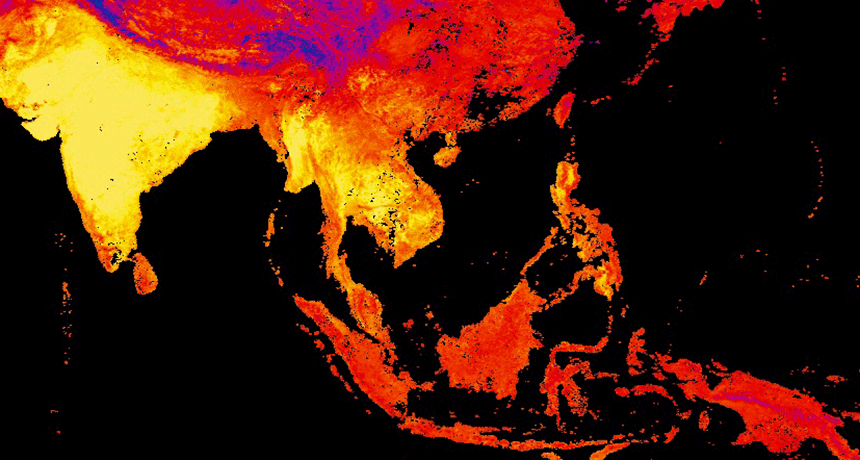
NEW ORLEANS, La. — For the first time, scientists have definitively linked human-caused climate change to extreme weather events.
Bouts of extreme weather occur every year. But a handful of events in 2016 had some help. These included a deadly heat wave that swept across Asia. It was one of several events that could not have been due solely to the natural ups and downs of climate.
That’s the finding of three new studies. They were part of a special December 13, 2017 issue of the Bulletin of the American Meteorological Society. (It’s also known as BAMS.)
Jeff Rosenfeld is editor in chief of BAMS. These new findings are a game changer — or should at least be a conversation changer, he says. Indeed, he maintains, “We can no longer be shy about talking about the connection between human causes of climate change and weather.”
Rosenfeld spoke at a news conference timed to the studies’ release. It was held at the fall meeting, here, of the American Geophysical Union (AGU).
For the past six years, BAMS has published a December issue containing research on extreme weather events the previous year. That research has sought to separate the role of human-caused climate change from natural variability.
Both can contribute to types of extreme weather, such as heat waves, record rains or blistering cold. The goal from the start has been to find ways to improve the science of such “attribution,” said Stephanie Herring. She was lead editor of the latest BAMS issue and works at the National Centers for Environmental Information in Boulder, Colo. They’re part of the National Oceanic and Atmospheric Administration.To date, BAMS has published 137 attribution studies. Herring says that this year is the first time any of them concluded a weather event was so extreme that it was outside the bounds of natural variability. And this year, researchers identified three such events.
Attributing extreme weather
The Asian heat wave was one. Another was the record global heat. In fact, 2016 was the hottest year ever recorded.
The third event was the growth and persistence of a large swath of high ocean temperatures. Located in the Bering Sea off the coast of Alaska, it was nicknamed “the blob.” Those unusually warm waters lingered for about 18 months. They have been linked to mass die-offs of birds and sharply…
The post Scientists at last link some extreme weather to human activities appeared first on FeedBox.